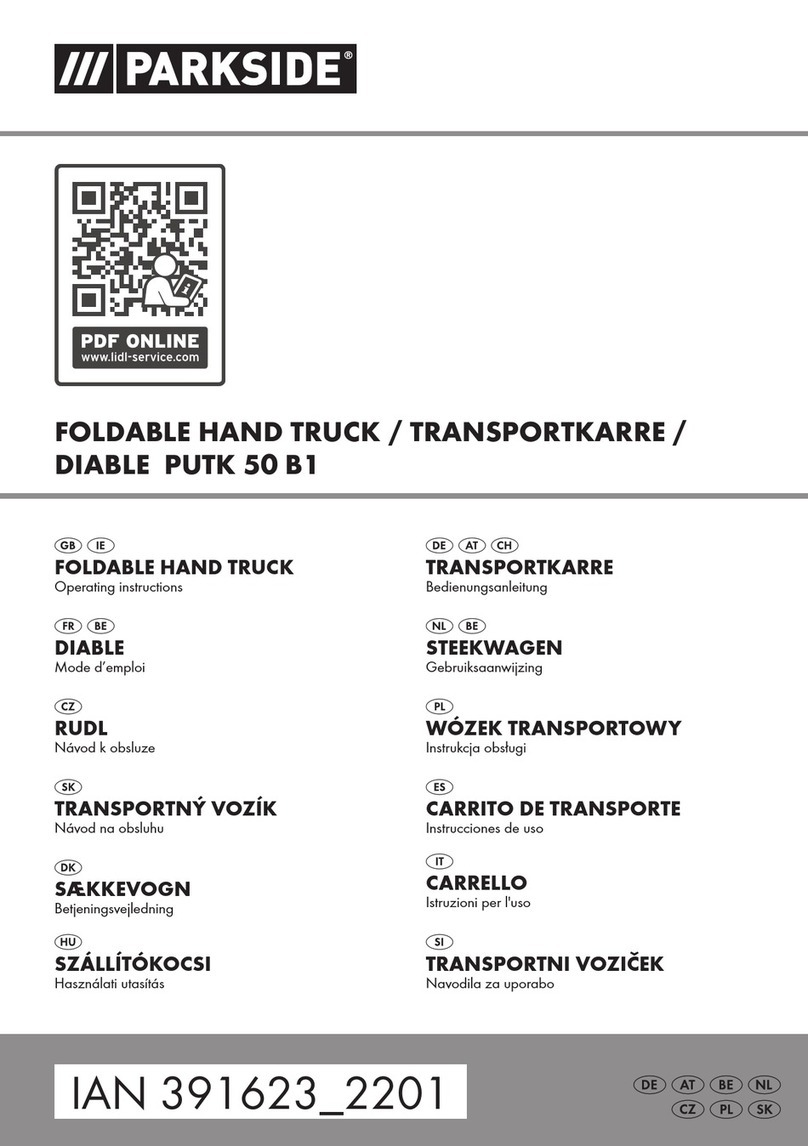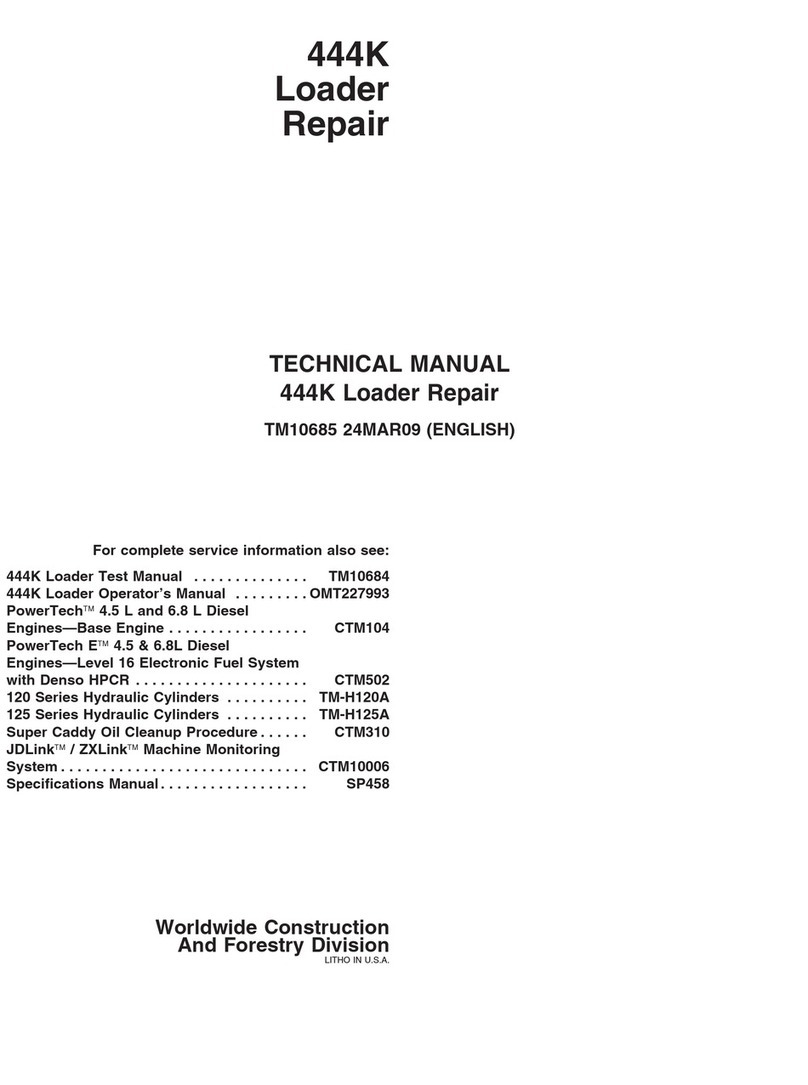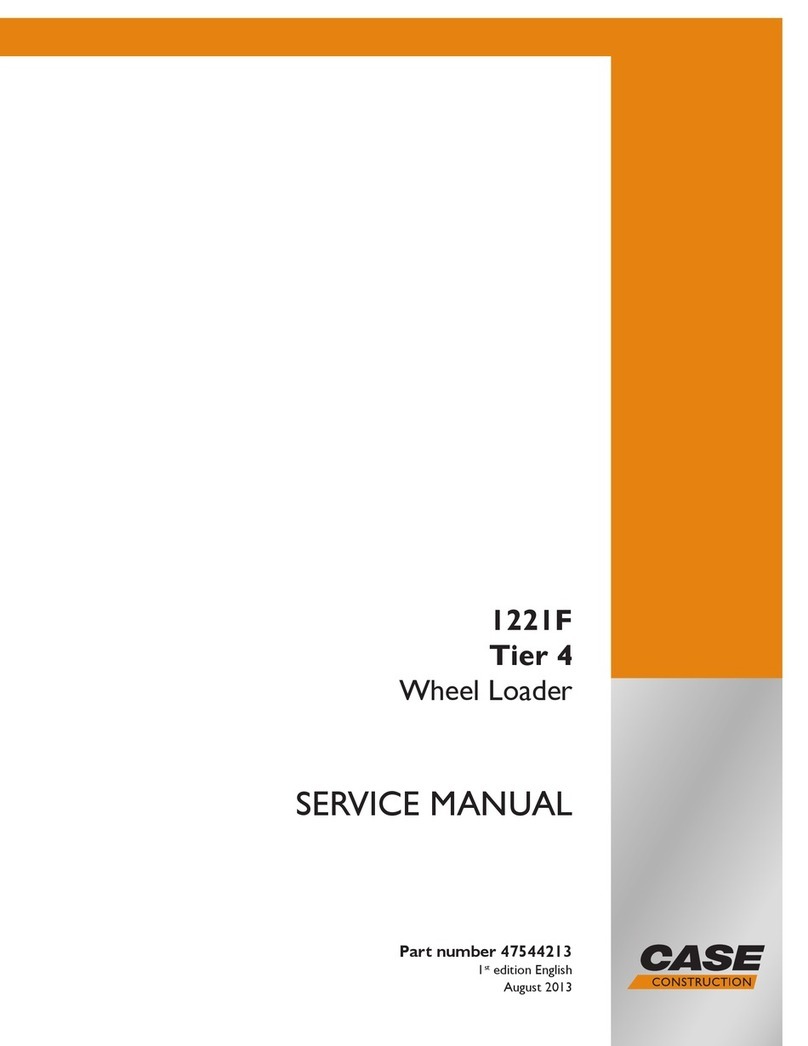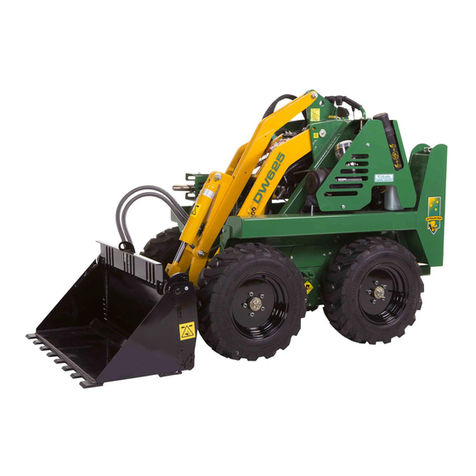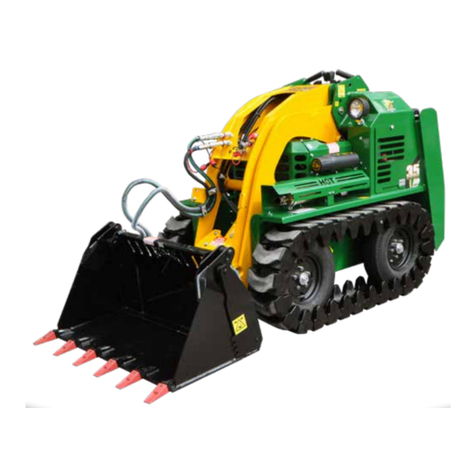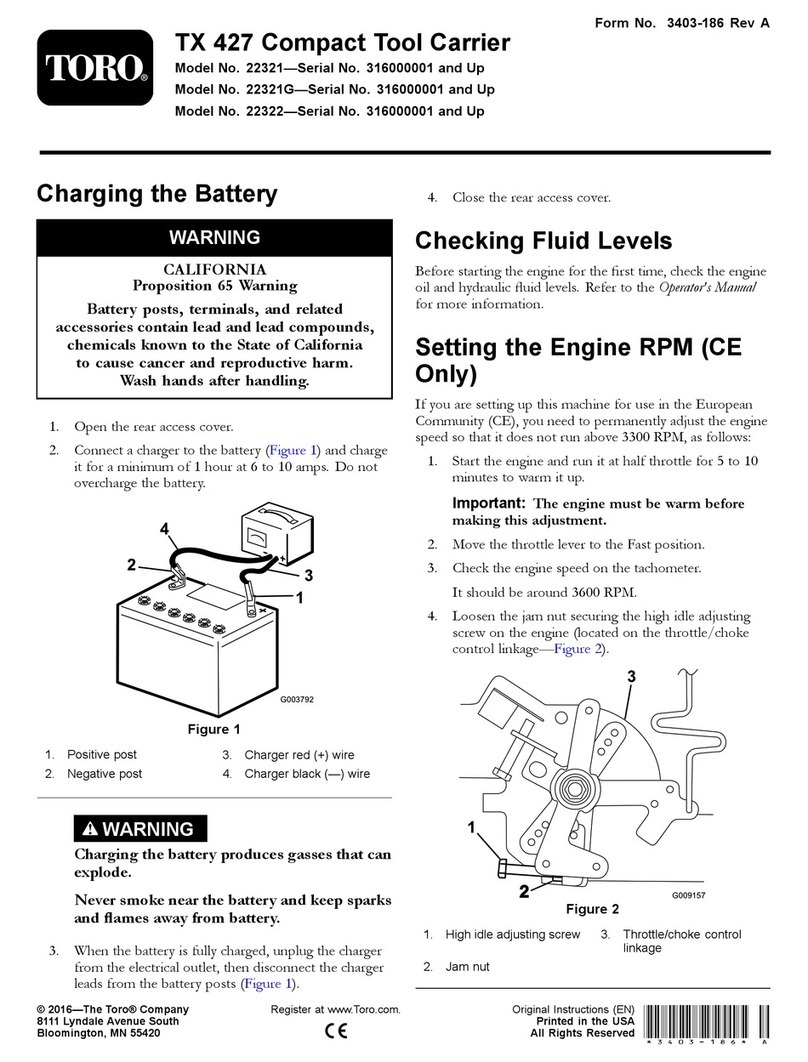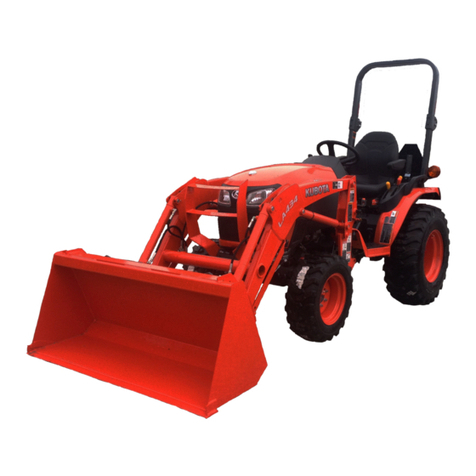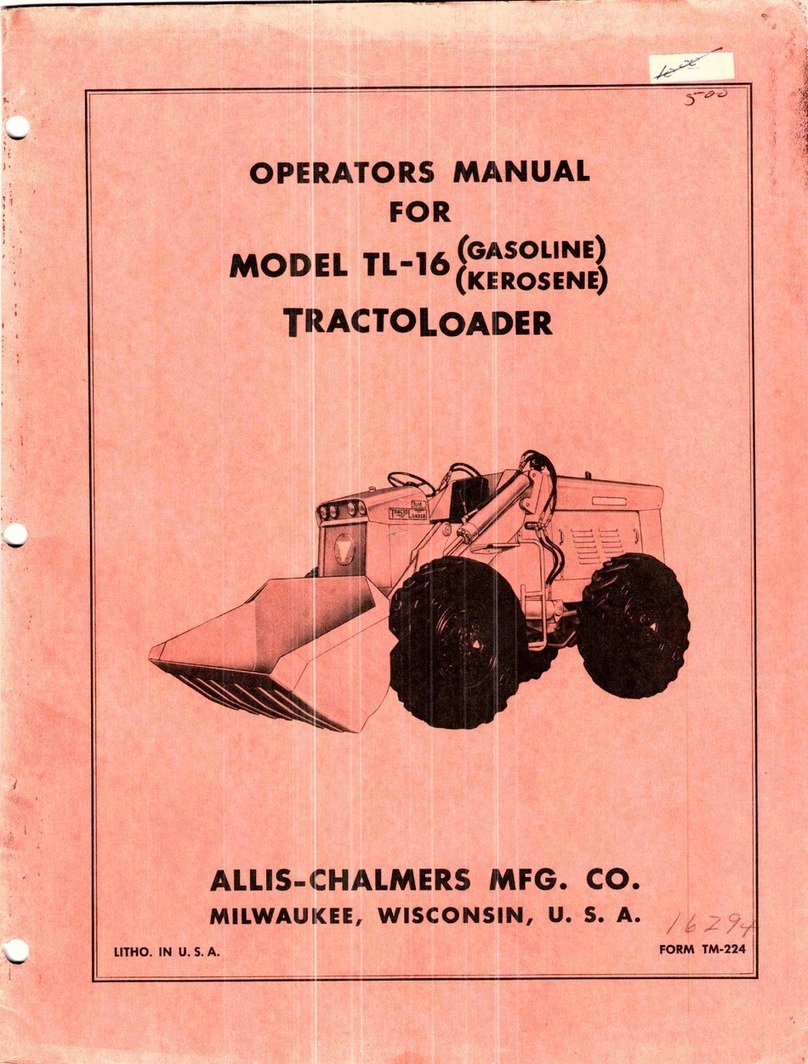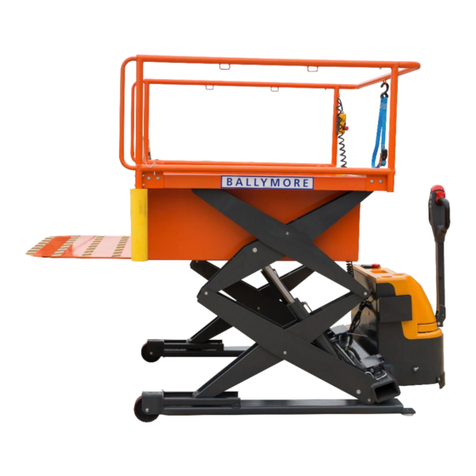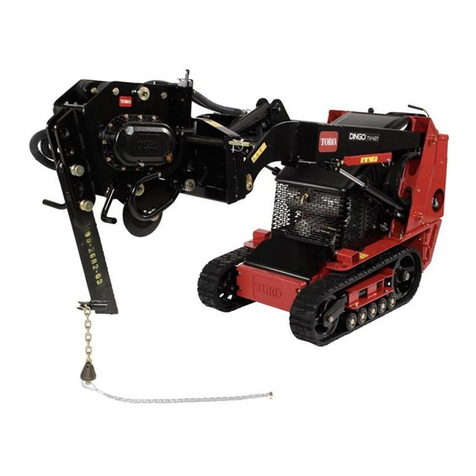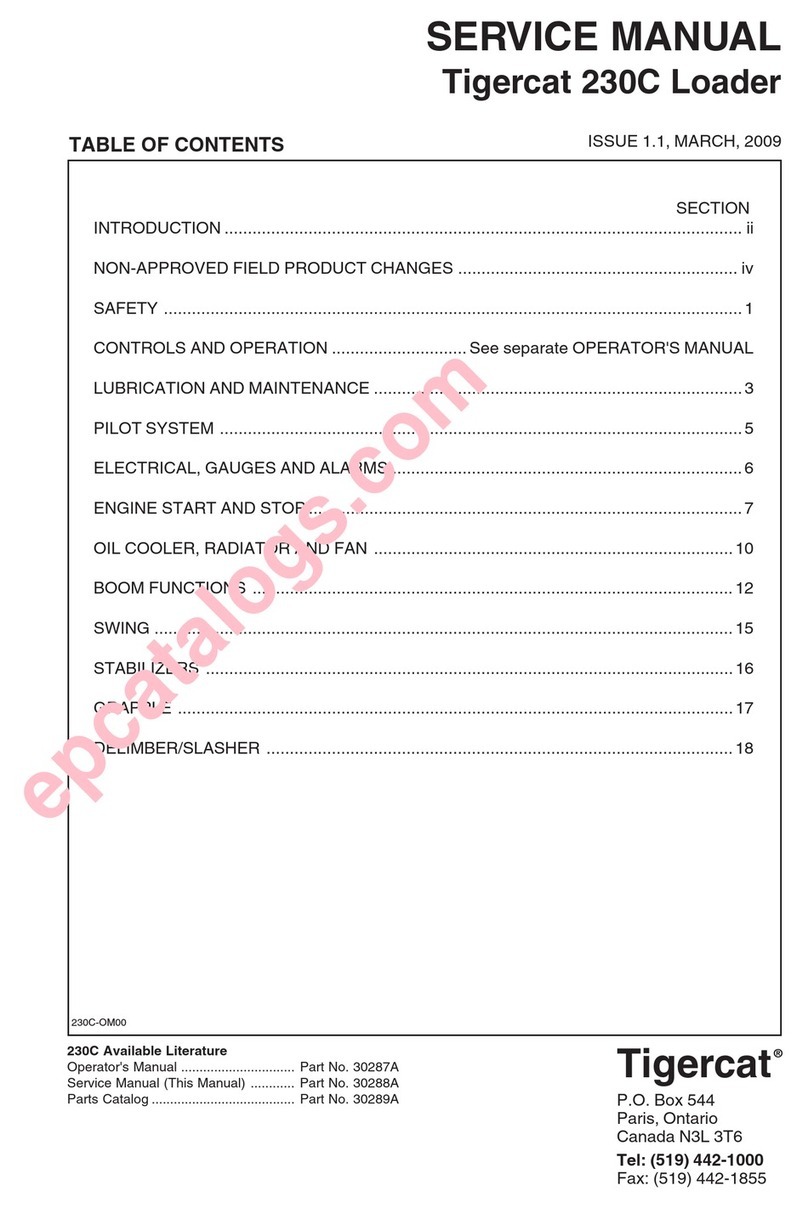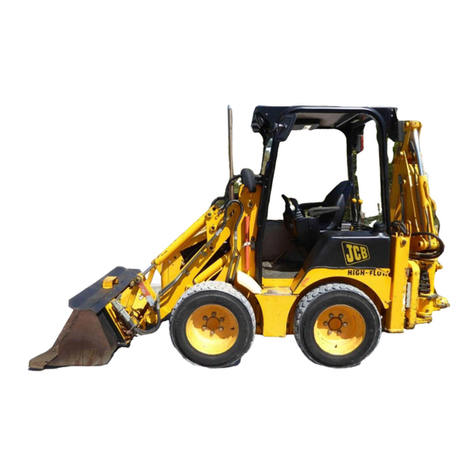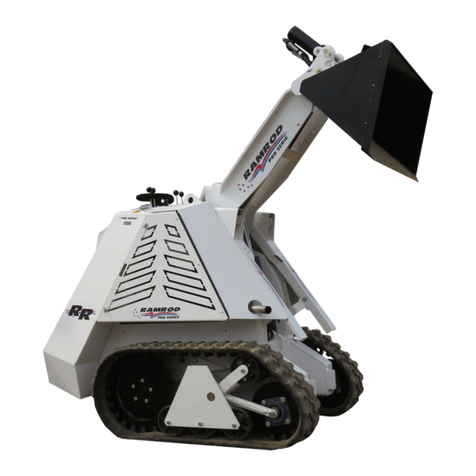
4Series 216 Loader
© 2022 Kanga Loaders.
Proprietary Statement
© Copyright 2022 Kanga Loaders (Kanga) - fully owned subsidiary of Digga Australia Pty Ltd. All rights reserved.
No part of this publication may be reproduced, photocopied, stored on a retrieval system, or transmitted without the
express prior written consent of the publisher.
Disclaimer
While all care has been taken in the development of this product, Kanga makes no representation or warranty that
this document is accurate, error-free, or up to date and no loss of any kind is accepted by Kanga or its agents arising
from the use of this document.
Kanga makes no representations or warranties with respect to the contents of this document, and specically
disclaims any express or implied warranties or tness for any particular purpose. Furthermore, Kanga reserves the
right to revise this publication and to make changes to its contents, at any time, without obligation to notify any
person or entity of such revisions or changes.
Trade marks
Kanga owns ® registered trade marks in Australia, the United States of America and other countries including the
Kangaroo logo (AU - 529784), “KANGA” (AU - 1178397), the Kanga Loaders logo (AU - 529784). “BUSINESS ON A
TRAILER” (AU - 1172336), “KANGA KID” (AU - 855550).
This document includes use of trade marks that are the property of Kanga, including registered trade marks and
trade marks that are the subject of pending applications, or which are otherwise protected by law. You may not use
or infringe these trade marks or the names “Digga”, “Kanga Loaders”, or the name of any of our related companies,
without the express written consent of Kanga.
Copyright
This document, its contents, the material, and content (including, but not limited to, artistic and literary works) on the
Kanga Loaders website are owned or licensed by Kanga and protected by copyright under the laws of the Australia,
United States of America and other countries.
You may view this document for the purposes of use and operation of the Kanga product purchased in connection
with the issue of this document.
You may view the contents of our website and save an electronic copy of the website solely for the usual operation of
your web browser visiting the site.
You must not otherwise reproduce, transmit (including broadcast), adapt, distribute, sell, modify or publish or
otherwise use any of the material on this document or our website, including audio and video excerpts, except as
permitted by statute or with Kanga’s prior written consent.
Patent and design rights
The products, inventions and processes subject of this document may be protected by granted patents or registered
designs owned or licensed by Kanga. You must not use or exploit such products, inventions and/or processes in a
manner that would constitute infringement of Kanga’s or its licensors’ rights in such patents or registered designs
without the express written consent of Kanga, or otherwise as expressly permitted under this document.
Framing
You must not frame any of the material appearing on this document or on Kanga websites and marketing material
except in accordance with the Digga Linking and Framing Policy (contained at https://www.kangaloaderusa.com/
terms/) or otherwise in accordance with Kanga’s prior with written consent.

